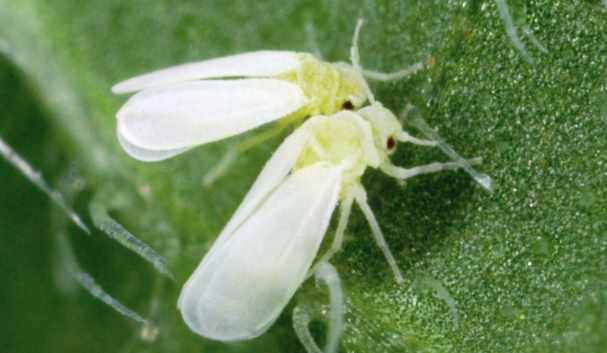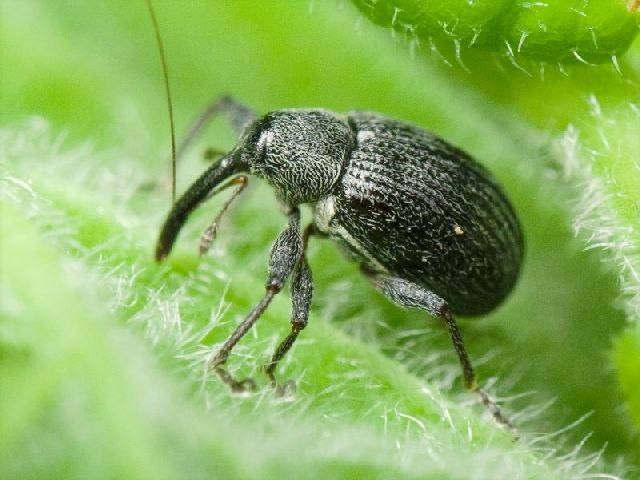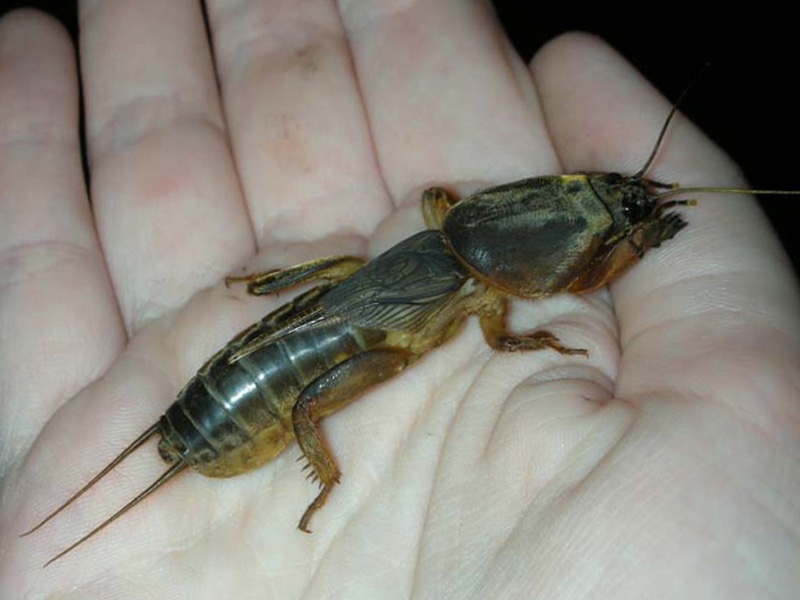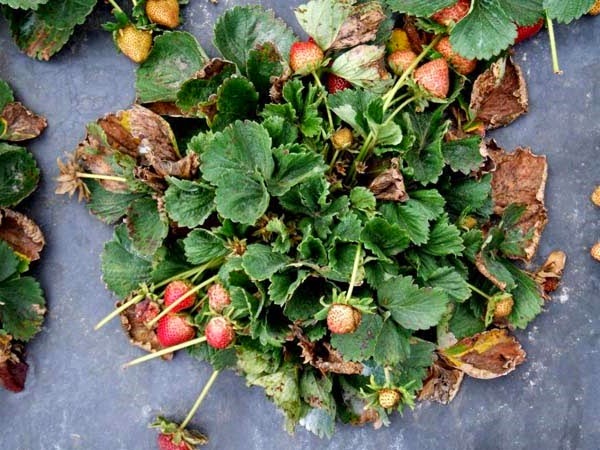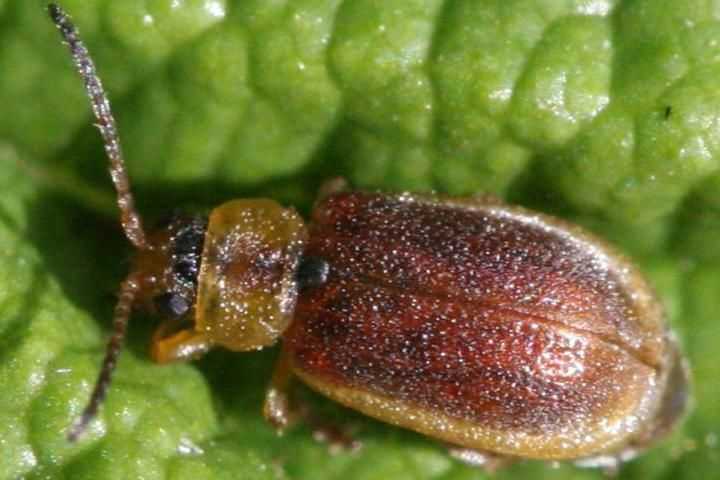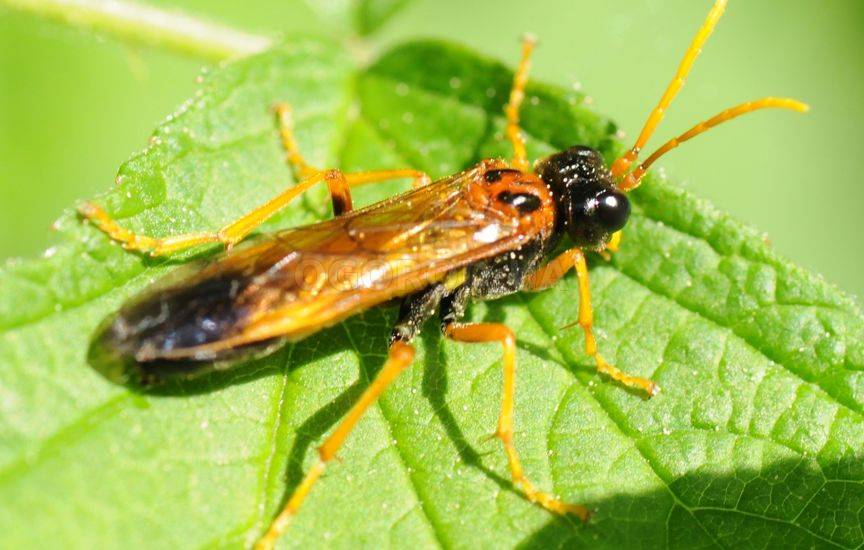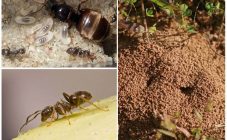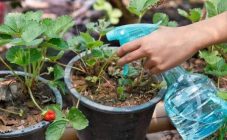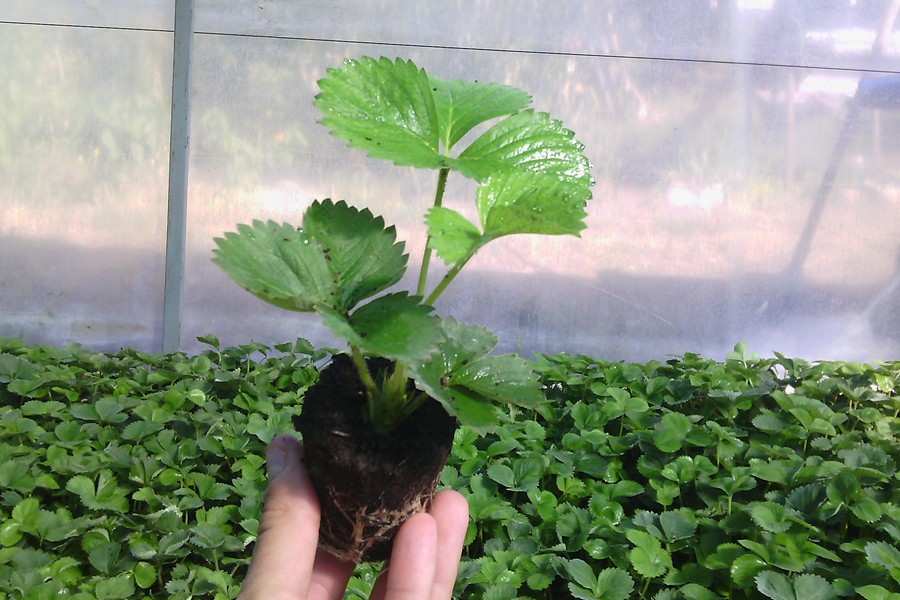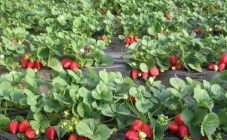Content:
Strawberries or garden strawberries are delicious, sweet and aromatic berries. Already at the beginning of summer, red berries appear on the plantation. However, the bushes and berries of garden strawberries have enough enemies, due to which the quality and quantity of the crop is reduced. To get an excellent berry harvest, you need to know the diseases and pests of strawberries and follow the rules for dealing with them.
Insect pests of strawberries and their control
Strawberry whitefly
Whitefly is a small pest. The length of the butterfly is no more than 3 mm, and the thickness is 0.3 mm. The midge has two pairs of wings, which are covered with a white, waxy coating.
Lives in colonies on the lower surface of strawberry leaves. It also lays eggs there. The larvae are somewhat similar to small scales. They feed on plant sap.
Symptoms of defeat
The defeat of the berry by the whitefly is indicated by:
- the plant lags behind in growth;
- the affected leaf curls up, and yellowish spots appear on it;
- its surface is covered with honeydew (glossy sticky substance);
- as a result of covering with honeydew - the appearance of a sooty fungus on the leaves (black spots);
- if you shake the affected leaves, then the flying moths form a whitish cloud.
What harm does a whitefly do? Due to the feeding of the insect with plant sap, strawberry bushes are weakened, and the black fungus prevents normal photosynthesis and the flow of air to the leaf surface. Also, sucking insects are carriers of viral diseases of garden strawberries.
Pest development conditions
Warm, humid summers contribute to the invasion of butterflies. Greenhouse plants are affected in the absence of normal ventilation.
The activity of butterflies stops when the air temperature drops to 10 ° C and below.
Preventive measures and methods of control
To prevent the appearance of whitefly on the plantation, it is necessary to create unfavorable conditions for its existence. The insect does not like sunny areas and prefers to exist in the shade.
Therefore, you need to follow the following planting and care rules:
- planting should not be thickened;
- you need to periodically weed the beds from weeds;
- do not spray plants during wet weather;
- remove and burn fallen leaves in the fall.
They destroy the whitefly with chemicals or folk compounds.
Pesticide treatment is carried out before flowering or after harvest. For this, drugs are used: Aktara, Actellik, Confidor, etc.
As folk remedies used infusion of yarrow (80 g per 1 liter of water) or infusion of garlic (150 g of garlic is infused for 5 days in 1 liter of water).
You can also wipe the affected leaf with a strong soapy solution (1 part soap to 6 parts water).
On large plantations, a biological control agent is used, which consists in using the natural parasite of the whitefly - encarsia. Insect females lay eggs directly in the pest's body.
Who loves to eat ripe strawberries in the garden - one of these pests is the lamb.
Sequins
Small black beetle, 2 to 6 mm in size, with yellow or orange specks on the back. It feeds on pollen and berries.
It flies to the smell of fermentation, which appears in overripe berries.
If someone eats up the berries at your place, then it is possible that the glitter is one of the answers to the question of who eats strawberries in the garden, how to deal with this pest.
Methods of prevention and control
Since the insect attracts the smell of fermentation, you need to:
- use drip irrigation, not sprinkling, since dry berries have no fermentation smell;
- in rainy weather, berries are harvested at the stage of technical maturity;
- in order to drown out the specific smell, it is recommended to spray the plantation with infusions of garlic, onions or potato tops.
You can also cover the plantation during the ripening of the crop with spunbod. This will save the crop and prevent the pest from eating the berry bushes.
Autumn is the period of cleaning the strawberry plantation from fallen leaves. Thanks to this operation, comfortable conditions for the wintering of many pests will disappear, including the lusters.
Strawberry raspberry weevil
Who Eats Strawberry Leaves? One of the fans of strawberry leaves is the weevil. The beetle, about 3 mm long, is black with a bluish tint. One bug can destroy up to 50 flowers. Climbing into the bud, the female lays an egg, from which a larva subsequently appears, which eats the flower from the inside and pupates there. In July, a new generation of the pest grows up.
Weevils are pests of strawberries during their flowering, and they need to be combated.
Symptoms of defeat
A characteristic lesion of peduncles by weevils - the buds seem to be cut with a knife. Beetles can also eat up pedicels. Early strawberry bushes affected by weevils suspend fruiting.
Control and prevention measures
Prevention measures include standard methods for preventing the spread of beetles: harvesting fallen leaves and then destroying it.
The weevil cannot stand the smell of garlic. Therefore, garlic is planted around the perimeter of the strawberry plantation.
For the fight, mechanical, chemical and folk remedies are used.
One way to fight is to collect beetles from bushes in the spring and destroy them. Damaged buds are also disposed of.
The popular method of struggle is spraying the bushes with infusion of onions, wormwood or tansy. You can use an infusion of ash (insist for 10-12 hours 3 kg of ash per 10 liters of hot water and 40 g of laundry soap).
Nettle weevil
If someone eats strawberry leaves on the plantation, then what to do in this case?
One of the varieties of pests that infect strawberry leaves is the nettle weevil. He gnaws at the edges of the leaves figuratively or in a straight line. The insect is green in color. The larvae hibernate in the ground.
Prevention and control methods
Prevention is carried out similarly to the prevention of beetle infestation.
It is also recommended that the soil is periodically loosened during budding and after picking the berries.
Medvedka
Insect description
Another pest of strawberries is the bear. Refers to large burrowing insects (5-8 cm long). It has well-developed forelimbs, designed for digging holes in the ground. Has a dark brown color. The insect moves not only under the ground, but also flies above the ground at a height of up to 5 m.
It hibernates in the soil at a depth of 20 to 40 cm. When spring comes, the insect moves to the upper layers of the earth and begins to actively gnaw at the roots.
In the spring, the bear makes a nest in the ground, in which it lays up to 400 eggs. May-early June is the time for the appearance of the larvae. Within 2-3 weeks, they are in the nest, after which they leave it on their own and begin to actively eat the roots of plants.
Symptoms of defeat
Since the bear eats up the root of the plant, the affected plants will be depressed or wilted. After pulling out the bush, the affected roots are visible.
Control measures
Mechanical means include digging paths and row spacings. In this case, the passages are destroyed and the insect nests are destroyed.
Another popular way to fight insects is to use baits. For their manufacture, glass jars are used, into which a little honey is poured at the bottom. Banks are buried in the ground, covered with straw on top.
The pest cannot stand the smell of marigolds, calendula or chrysanthemums. Therefore, for protection, a ridge with flowers is planted over the plantation.
Poisoned grain baits have worked well. The following drugs are used as a poison: Marshall, Aktara, Zolon, etc.
Toxic chemicals can be applied through the drip irrigation system.
The natural enemies of the bear are birds, as well as a lizard, a hedgehog, ants, etc. The bird can eat adult pests and their larvae.
In addition to birds, the frog also eats with pleasure bears, weevils, caterpillars, etc. During the summer, a frog can eat more than 1000 harmful insects.
Strawberry nematode
This worm, up to 2 mm long, has a cylindrical body. A very dangerous pest that destroys vegetables and berries. It looks like a thin light thread. It feeds on plant sap.
An area infected with a nematode reduces the yield by almost half.
It affects buds and leaf axils. The leaf, which is affected by the nematode, darkens and deforms.
The disease is accompanied by deformation of buds, flowers and ovaries. Affected bushes lag behind in growth and do not produce berries at all with a strong infection.
If someone eats strawberries on the plantation, look, maybe there are nematode worms in the berry.
Control and prevention methods
Preventive measures include correct crop rotation and weed control on the site.
Also, as a struggle, you can treat the bushes in early spring with hot water (about 50 ° C).
If brown bugs appear on the strawberries, then the area may be affected by the strawberry leaf beetle.
Strawberry leaf beetle
The insect is 3-4 mm long. Causes focal damage to plants.
Affected plants have leaves that are punctured by many small holes.
Accordingly, the infected bush develops poorly or dries up altogether. The berries become small, and the ovaries practically do not develop.
Prevention and control of pests
Prevention consists in removing from the site of meadowsweet and cinquefoil goose, that is, the plants that the leaf beetle feeds on.
It is also necessary to periodically loosen the soil. This leads to the destruction of the larvae development sites, and they become more accessible to predators.
In early spring, the plantation is treated with tobacco crumbs.
Before flowering, infected plantings are treated with insecticides.
What to do if caterpillars appear on strawberries and how to deal with them?
Sawflies
On strawberry bushes you can often find strawberry sawfly caterpillars.
The insect has a glossy black color with a yellow band. It looks like a wasp. The length of an adult insect is 8-9 mm.
The larvae or caterpillars are green. The sawfly hibernates in the surface layers of the earth. In early spring, the larvae pupate, and the emergence of adults coincides with the time when the buds appear on the strawberries.
In order to lay eggs, the female saws through the top of the leaf. After 8-12 days, larvae appear, which develop within 20-25 days. The larvae feed on leaves, gnawing holes in them.
Pest prevention and control
For destruction, chemical treatment of the site with insecticides is used.
Loosening of the land in the area of bushes, as well as clearing the plantation from weeds, acts as a preventive measure.
Slobbering penny
Another pest of strawberry bushes is the slobbering penny.
You can determine the appearance of a pest on plants by the foam clots that appear on the leaves. If you grind such a spit, then inside you can see a cicada larva.
The pest feeds on plant sap. Affected bushes have deformed leaves, flowers, underdeveloped ovaries, etc.
As a fight against penny, infusions of wormwood, garlic, tansy or tobacco dust are used, which are sprayed on the affected plants.
The drugs Aktara, Karbofos, Intravir, etc. are used as chemical protection.
Thus, timely protection of the plantation and timely preventive work will allow you to get an excellent harvest of berries.
